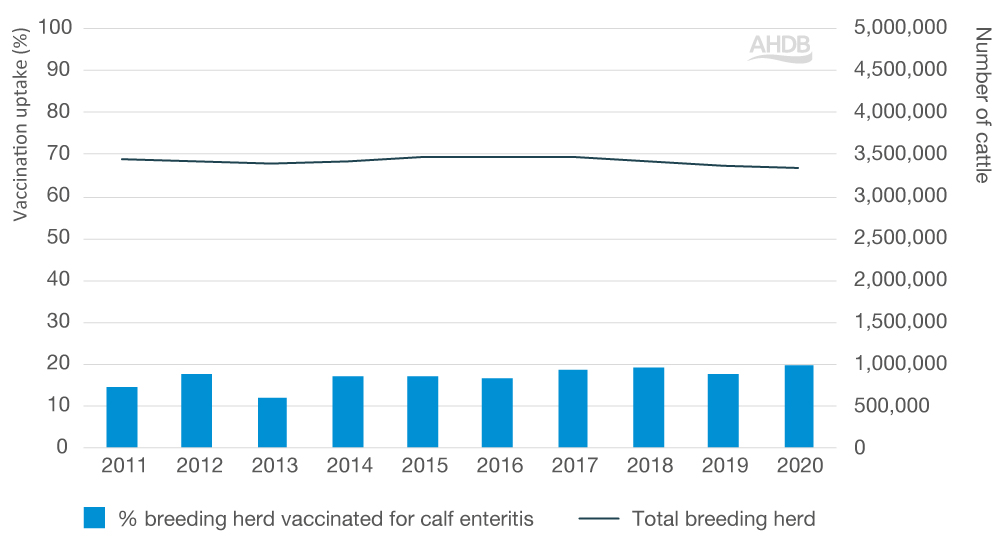Calf enteritis, or calf scour, is a common problem found on most cattle farms in the UK. It can be a major cause of poor growth and calf mortality.
The incidence and severity of disease is dependent upon the level of colostral protection that a calf receives within the first six hours of life. Several vaccines have been developed to actively immunise cattle against various antigenic components, to induce serological and colostral antibody production. The antibodies in colostrum provide passive immunity to the newborn calf, if the calf obtains an adequate quantity of high-quality colostrum.
The cost: £2–12m (Escherichia coli infections) and £9–12m (enteric disease) (Bennett R. 2005) to the national herd. It should be noted that this cost may not include all forms of calf enteritis.
Four vaccines for calf enteritis were marketed in the UK:
- Bovigen Scour contains E. coli F5 (K99) adhesin antigen and inactivated Rotavirus and Coronavirus
- Lactovac contains E. coli K99/F41 and inactivated Rotavirus and Coronavirus
- Rotavec Corona Emulsion contains E. coli F5 (K99) adhesin and inactivated Rotavirus and Coronavirus
- Trivacton 6 contains E. coli K99, Y, 31A and F41 antigens and inactivated Rotavirus and Coronavirus
Assumptions
Numerator: The number of doses of vaccine administered has been calculated by multiplying the number of packs sold by the number of doses per pack.Although Lactovac and Trivacton 6 recommend two doses as a primary vaccination course, common industry practice with these vaccines is to give only a single injection as the primary course, and one injection per pregnancy thereafter. It was, therefore, assumed that each pregnant animal should receive one dose per year.
Denominator: It was assumed that only female breeding animals should be vaccinated and that these vaccines would only be given to pregnant female breeding cattle. As most cattle calve down after 24 months and the vaccine is given in late pregnancy, only female cattle over two years of age were included in the calculation.
The mean age of dairy cattle at first calving is falling (CHAWG 2018) and a recent paper reported that almost one in eight dairy heifers calved for the first time at 24 months of age or younger (Eastham N.T. 2018). However, most dairy heifers joining the national herd will be replacing dairy cows being culled, which will not need to be vaccinated; the calving interval for UK-bred pedigree Holstein females was 405 days in 2017 (CHAWG 2018). For ease of calculation, it was considered acceptable to use the population of all female cattle over two years of age as the target population for this vaccine.
Vaccination uptake
Uptake of calf enteritis vaccines was the lowest among all the categories of cattle vaccine in this report. However, the estimated proportion of breeding cows vaccinated has been relatively stable since 2014, with over one in six cows being vaccinated every year (range 16–19%).






